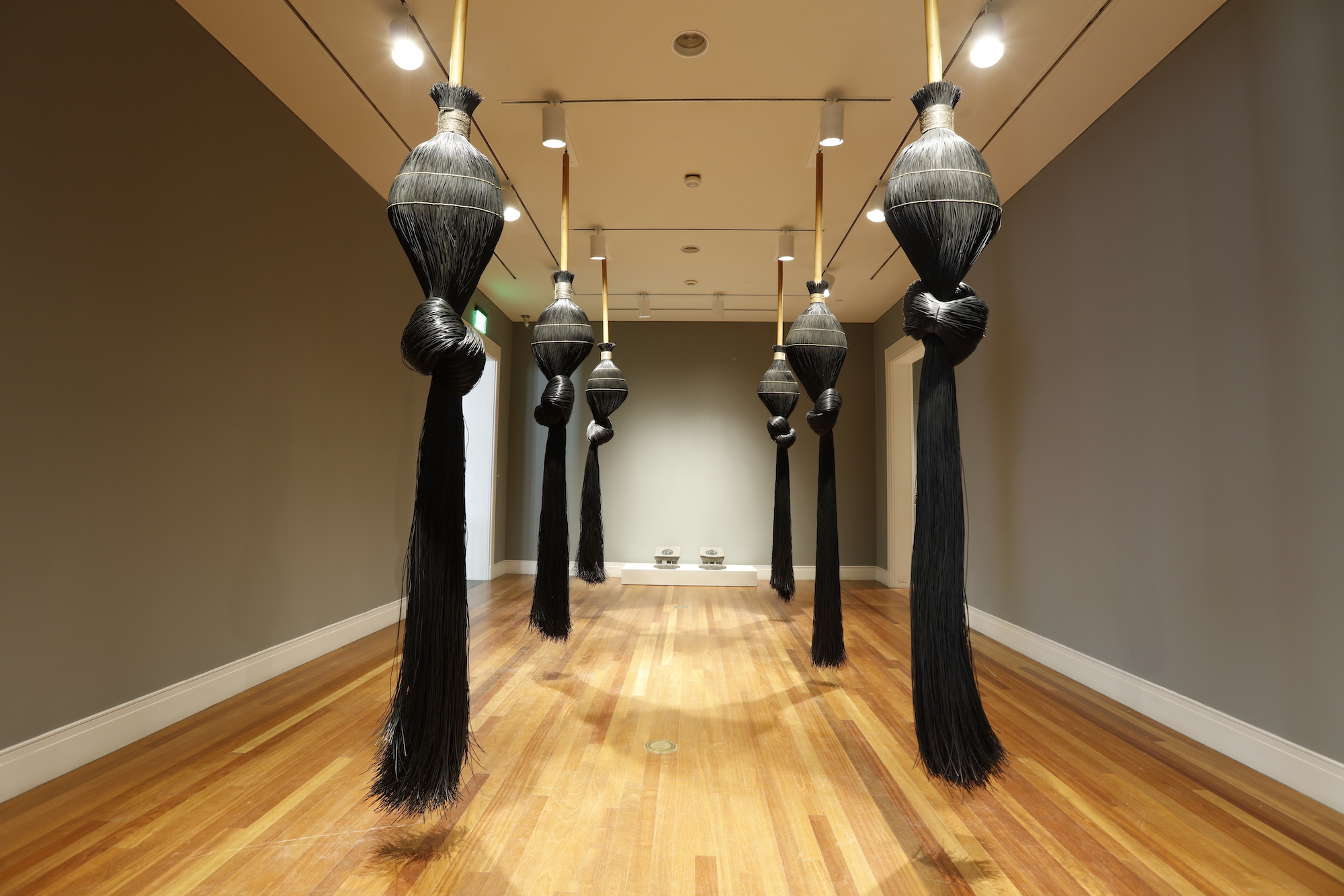Ogden Museum of Southern Art
925 Camp St
New Orleans, LA 70130
504.539.9650 | HOURS
925 Camp St
New Orleans, LA 70130
504.539.9650 | HOURS

Susan Plum, Luz y Solidaridad, 2006, Vinyl fibers, wooden dowels, stone and cast glass, Collection of the artist
Susan Plum is a multidisciplinary artist currently living and working in Houston, Texas – the city of her birth. Born in 1944, Plum was raised in Mexico City. Painting was the primary medium of her early practice, and she was heavily influenced by Magical Realism and Surrealism in Mexican Art. Plum attended the University of Arizona, Tucson (1963); the University of the Americas, Mexico City (1965); and the Pilchuck Glass School, Stanwood, Washington (1986-87, 1994). She has taught at the Pilchuck Glass School and the Penland School of Crafts, North Carolina. She has studied with shamans in Mexico, and a Pundit in South India, deepening her personal expression and understanding of ritual. She creates bodies of work that reflect her environment which include: cosmology, quantum physics, indigenous beliefs of co-existing with nature, and humanitarian concerns. She believes that art can be a vehicle for healing, transformation and social activism.
Luz y Solidaridad is a sculptural installation that addresses the disappearance and murder of young women near the US border around Juarez – a femicide that some estimate to be in the thousands since 1993. Fueled by the perceived lack of inaction by authorities and inspired by a community of mothers who have lost their daughters, Plum created Luz y Solidaridad (Light and Solidarity) – a sculptural installation that is often connected to a ritual cleansing performance.
This iteration of Luz y Solidaridad consists of three symbolic elements: the escoba (broom), the nudo (knot), and the metate (grinding stone). The broom is traditionally a feminine symbol, one that is tied both symbolically and literally to the act of cleansing. Throughout the world, there are rituals that revolve around the broom. “In Burma, women come to the temples dressed in beautiful traditional saris, carrying small traditional brooms in order to sweep the day’s “energy” away at sunset. In the morning temples are opened up to the public, fresh and “cleansed” of the previous day’s energy,” explains Plum. “In Mexico, there is a daily ritual of sweeping outside one’s home in order to cleanse and begin the day. In this piece, the hanging brooms are tied in a knot to symbolize both the cutting off or blocking of the feminine as well as to remind us of the cosmic knot or Buddhist knot.” Plum uses the binding of the broom fibers and the knot to illustrate both blockage and connectivity.
With the metates, she also symbolically uses the object to illustrate both the erasure of the past with connectivity to the present. “These metates speak to the lineage of the Virgin of Guadalupe,” she explains. “Because before Guadalupe, there was the Toltec, Tonāntzin; the Aztec, Coatlicue; and the Mayan, IxChel. She had a long and geographically extensive lineage as the goddess before they made her the Virgin of Guadalupe. The metate which also dates back to the Pre-Columbian era, was used for grinding corn, peppers, etc. I placed this beautiful image of the Virgin of Guadalupe, (cast in glass) into the center of the metates to honor the ancient origins of the Goddess. I drew on the ancient and spiritual roots of Mexico in creating all the work for the installation.”
Although this work is firmly tied to the humanitarian crisis in Ciudad de Juarez, Plum’s work on this subject made her aware of a global crisis of violence against women. This work now stands to bring healing and awareness to this critical issue facing women worldwide.